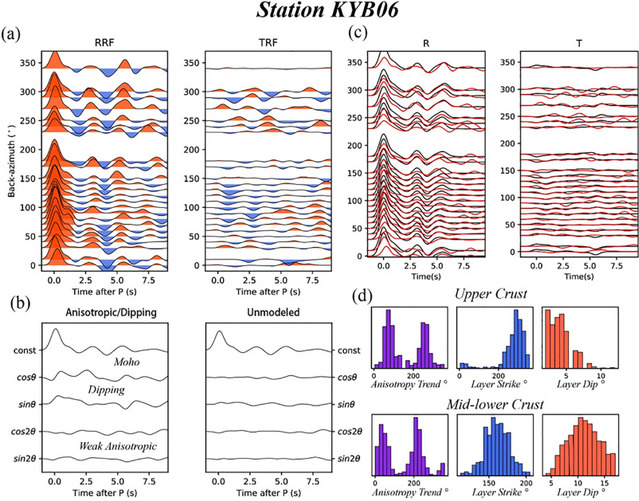作者: Cunrui Han, Mijian Xu, Zhouchuan Huang, Liangshu Wang, Mingjie Xu, Ning Mi, Dayong Yu, Tao Gou, Haibo Wang, Shijie Hao, Muyu Tian, Yajing Bi
刊物信息: Physics of the Earth and Planetary Interiors Volume 306, September 2020, 106522
doi:10.1016/j.pepi.2020.106522
摘要:
The southeastern (SE) Tibetan plateau is uplifting accompanying strong seismicity, but the relationship between the crustal structure and tectonic process in this region is still unclear. Seismic anisotropy provides important clues for the deformation mechanism. Here we applied the harmonic decomposition approach and further conducted a Markov-Chain-Monte-Carlo (MCMC) inversion to analyze the crustal anisotropy from receiver functions using waveforms recorded by dense stations in the SE Tibetan plateau. More spatial details on the crustal anisotropy and interface are determined consequently. While the anisotropies in the upper crust are relatively weak (~2%), the anisotropies in the mid-lower crust are mostly stronger than 4%. The fast polarization directions (FPDs) in the mid-lower crust show a dominant circular pattern, in good coherence with the topographic contours, indicating that the crustal deformations in the SE Tibetan plateau may be mainly controlled by the gravity potential. Because of the significant Moho steps along the plateau margin, the extruded deep crustal materials are blocked by the strong crust around so that the minerals are aligned to be sub-parallel to the plateau margins.
